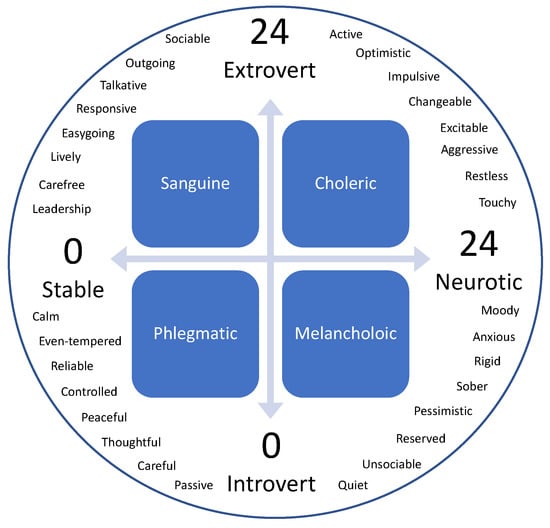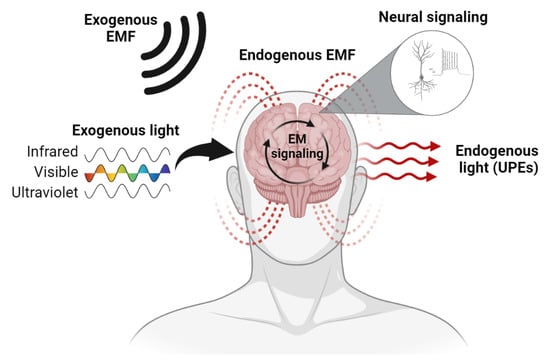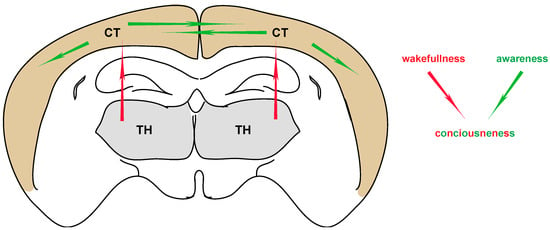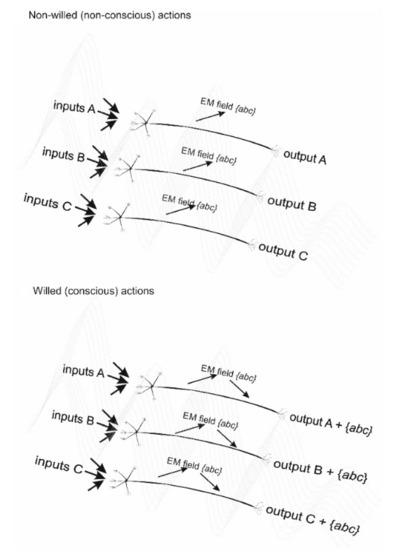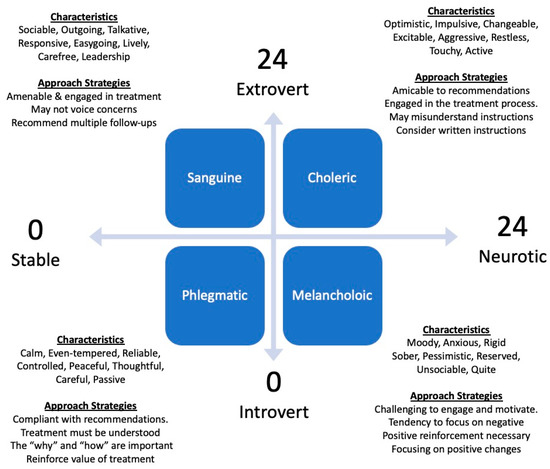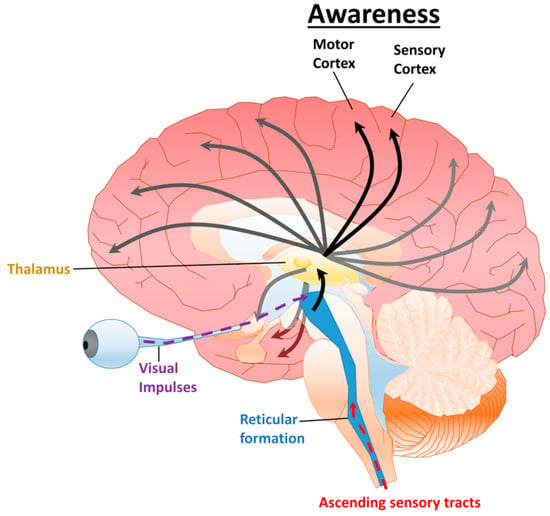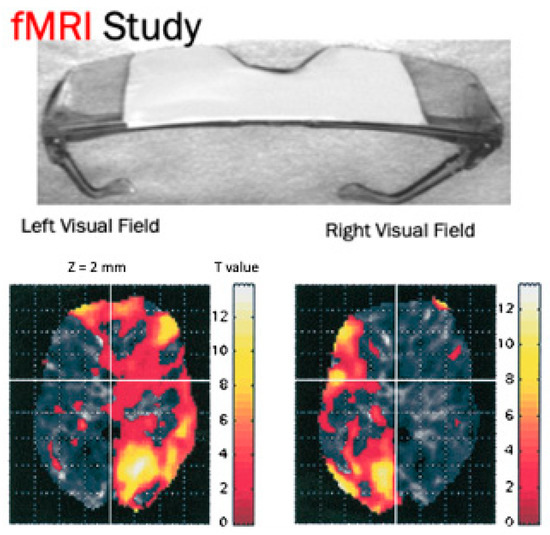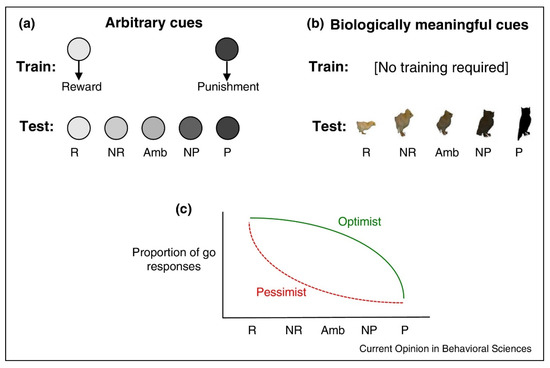Neuroanatomy of Consciousness and the Will
A topical collection in NeuroSci (ISSN 2673-4087).
Viewed by 76051
Share This Topical Collection
Editor
 Dr. James Sonne
Dr. James Sonne
 Dr. James Sonne
Dr. James Sonne
E-Mail
Guest Editor
Department of Biomedical Sciences, School of Medicine Greenville, University of South Carolina, 607 Grove Rd., Greenville, SC 29605, USA
Interests: anatomy; neuroscience; behavior; parkinson; dopamine; basal nuclei; basal ganglia; substantia nigra
Topical Collection Information
Dear Colleagues,
One of perhaps the most fundamental questions of neuroscience surrounds the complexity of the brain and its ability to produce the will, agency, choice, and ultimately consciousness. As we continue to identify regions of the brain that drive specific outwardly measurable behaviors, our understanding approaches an asymptote that tempts to assume neuroscience explains consciousness and the will, but how far has our understanding brought us? Many disorders—including psychiatric, traumatic, hereditary, and acquired—produce changes in volition, motivation, perception, and executive function. Are these windows into the role of certain anatomical regions and their contribution to the fundamental processes of consciousness? Is it possible to observe and measure varying degrees of consciousness that can be modified therapeutically? Do illusions, disorders, and gaps in our awareness erode the fidelity of our senses, and does our brain’s imagining affect our ability to interact with an external reality? While the debate about consciousness and the will are primarily philosophical, these are very practical issues that surround health, wellbeing, and our evolutionary understanding. In this issue, we hope to study concrete examples to provide boundaries around consciousness while advancing research methods that are necessary for further investigation.
Dr. James Sonne
Guest Editor
Manuscript Submission Information
Manuscripts should be submitted online at www.mdpi.com by registering and logging in to this website. Once you are registered, click here to go to the submission form. Manuscripts can be submitted until the deadline. All submissions that pass pre-check are peer-reviewed. Accepted papers will be published continuously in the journal (as soon as accepted) and will be listed together on the collection website. Research articles, review articles as well as short communications are invited. For planned papers, a title and short abstract (about 100 words) can be sent to the Editorial Office for announcement on this website.
Submitted manuscripts should not have been published previously, nor be under consideration for publication elsewhere (except conference proceedings papers). All manuscripts are thoroughly refereed through a single-blind peer-review process. A guide for authors and other relevant information for submission of manuscripts is available on the Instructions for Authors page. NeuroSci is an international peer-reviewed open access quarterly journal published by MDPI.
Please visit the Instructions for Authors page before submitting a manuscript.
The Article Processing Charge (APC) for publication in this open access journal is 1000 CHF (Swiss Francs).
Submitted papers should be well formatted and use good English. Authors may use MDPI's
English editing service prior to publication or during author revisions.
Published Papers (15 papers)
Open AccessArticle
Personality Type and Chronic Pain: The Relationship between Personality Profile and Chronic Low Back Pain Using Eysenck’s Personality Inventory
by
William J. Hanney, Abigail T. Wilson, Travis Smith, Chandler Shiley, Josh Howe and Morey J. Kolber
Cited by 1 | Viewed by 4206
Abstract
Background: Personality type plays a key role in how individuals respond to a variety of stimuli; however, it is unclear if there is a significant influence on pain perception. While pain is associated with many conditions, chronic low back pain (cLBP) is one
[...] Read more.
Background: Personality type plays a key role in how individuals respond to a variety of stimuli; however, it is unclear if there is a significant influence on pain perception. While pain is associated with many conditions, chronic low back pain (cLBP) is one of the most prevalent and debilitating problems in modern society. Treating this condition can be a challenge and clinicians must understand all factors that can influence pain perception. Purpose: The present study investigated the relationship between personality type and pain experience in patients experiencing cLBP. Methods: One hundred twenty-four participants completed the Eysenck Personality Inventory (EPI), which identifies two major components of the human personality, neuroticism, and extraversion. Participants also completed the Oswestry Disability Index (ODI), the Tampa Scale for Kinesiophobia (TSK), the Numeric Pain Rating Scale (NPRS), and the Pain Catastrophizing Scale (PCS). The association between pain and personality was determined with a Spearman Rank Correlation Coefficient. A hierarchical cluster analysis with Ward’s clustering method examined for subgroups of individuals based on these variables. Results: The neuroticism score (EPI-N) was found to have a statistically significant relationship with all pain outcome measures. This suggests that people exhibiting a neurotic personality type are likely to have more fear of movement (
p = 0.001), greater catastrophizing behavior (
p < 0.001), higher self-reported levels of disability (
p < 0.001), and higher overall reported levels of pain (
p = 0.046) than those with other, more stable personality types. Three clusters were derived with varying levels of pain-related factors and personality. Conclusions: Personality type appears to have an influence on many of the attributes associated with cLBP and may be a useful determinate in both prognosis and interventions.
Full article
►▼
Show Figures
Open AccessFeature PaperReview
The Case for Octopus Consciousness: Valence
by
Jennifer Mather
Cited by 3 | Viewed by 2503
Abstract
Octopuses may demonstrate perceptual richness, neural unity, temporality, and finally, valence or affective evaluation, as the neural basis for consciousness. Octopuses attach a positive valence to food as ‘specializing generalists’ with long-term learning and flexible choices. They value shelter, yet modify, adapt and
[...] Read more.
Octopuses may demonstrate perceptual richness, neural unity, temporality, and finally, valence or affective evaluation, as the neural basis for consciousness. Octopuses attach a positive valence to food as ‘specializing generalists’ with long-term learning and flexible choices. They value shelter, yet modify, adapt and even transport it where necessary. They attach a negative valence to what may be described as pain, monitoring and protecting the damaged area and learning to associate locations with pain relief. Finally and surprisingly, octopuses attach a negative value to uncertainty so that they explore their environment before exploiting certain aspects of it and even exhibit motor play. This series of four papers, culminating in the present one, demonstrates in detail why the Cambridge Declaration of Consciousness has suggested octopuses might have the substrate for consciousness, although it is likely not similar to or as complex as that shown by ‘higher’ vertebrate lineages.
Full article
Open AccessEditorial
Neuroanatomy of the Will
by
James William Hendry Sonne
Cited by 1 | Viewed by 1473
Abstract
Questions regarding the nature and source of consciousness and individual agency to make decisions have enormous practical implications that include human health and wellbeing, social policy, and economics. Ethical issues involving the ability for patients to make conscious, informed choices, such as in
[...] Read more.
Questions regarding the nature and source of consciousness and individual agency to make decisions have enormous practical implications that include human health and wellbeing, social policy, and economics. Ethical issues involving the ability for patients to make conscious, informed choices, such as in cases of dementia or coma, abound, and the health implications of individual choice on public wellbeing are becoming increasingly important as population densities increase. Furthermore, the use of animals for drug testing presents moral dilemmas related to our concepts of consciousness, pain, and consent. While philosophers have long debated aspects of consciousness, the means to scientifically address specific questions regarding regional and cellular functions of the brain are constantly emerging, as are new theories of physical laws and particle interactions which allow for the formation of new hypotheses of the source of consciousness. These emerging capabilities and hypotheses are increasingly able to be subjected to methodological scrutiny by the scientific community. To facilitate open discussion and advances in investigations regarding the nature of consciousness, this Topical Collection is intended to provide a peer-reviewed space to discuss or propose falsifiable hypotheses of consciousness in a full range of systems, using methods across disciplines of biology, physics, computer science, and philosophy of science that can inform such a discussion, while emphasizing the role that our conception of consciousness has on human health, society, and policy.
Full article
Open AccessArticle
Perceptual Awareness and Its Relationship with Consciousness: Hints from Perceptual Multistability
by
Chiara Saracini
Cited by 1 | Viewed by 2950
Abstract
Many interesting theories of consciousness have been proposed, but so far, there is no “unified” theory capable of encompassing all aspects of this phenomenon. We are all aware of what it feels like to be conscious and what happens if there is an
[...] Read more.
Many interesting theories of consciousness have been proposed, but so far, there is no “unified” theory capable of encompassing all aspects of this phenomenon. We are all aware of what it feels like to be conscious and what happens if there is an absence of consciousness. We are becoming more and more skilled in measuring consciousness states; nevertheless, we still “don’t get it” in its deeper essence. How does all the processed information converge from different brain areas and structures to a common unity, giving us this very private “feeling of being conscious”, despite the constantly changing flow of information between internal and external states? “Multistability” refers to a class of perceptual phenomena where subjective awareness spontaneously and continuously alternates between different percepts, although the objective stimuli do not change, supporting the idea that the brain “interprets” sensorial input in a “constructive” way. In this perspective paper, multistability and perceptual awareness are discussed as a methodological window for understanding the “local” states of consciousness, a privileged position from which it is possible to observe the brain dynamics and mechanisms producing the subjective phenomena of perceptual awareness in the very moment they are happening.
Full article
►▼
Show Figures
Open AccessArticle
A Transmissive Theory of Brain Function: Implications for Health, Disease, and Consciousness
by
Nicolas Rouleau and Nicholas Cimino
Cited by 2 | Viewed by 6072
Abstract
Identifying a complete, accurate model of brain function would allow neuroscientists and clinicians to make powerful neuropsychological predictions and diagnoses as well as develop more effective treatments to mitigate or reverse neuropathology. The productive model of brain function, which has been dominant in
[...] Read more.
Identifying a complete, accurate model of brain function would allow neuroscientists and clinicians to make powerful neuropsychological predictions and diagnoses as well as develop more effective treatments to mitigate or reverse neuropathology. The productive model of brain function, which has been dominant in the field for centuries, cannot easily accommodate some higher-order neural processes associated with consciousness and other neuropsychological phenomena. However, in recent years, it has become increasingly evident that the brain is highly receptive to and readily emits electromagnetic (EM) fields and light. Indeed, brain tissues can generate endogenous, complex EM fields and ultraweak photon emissions (UPEs) within the visible and near-visible EM spectra. EM-based neural mechanisms, such as ephaptic coupling and non-visual optical brain signaling, expand canonical neural signaling modalities and are beginning to disrupt conventional models of brain function. Here, we present an evidence-based argument for the existence of brain processes that are caused by the transmission of extracerebral, EM signals and recommend experimental strategies with which to test the hypothesis. We argue for a synthesis of productive and transmissive models of brain function and discuss implications for the study of consciousness, brain health, and disease.
Full article
►▼
Show Figures
Open AccessOpinion
The Consciousness of Pain: A Thalamocortical Perspective
by
Paraskevi Sgourdou
Cited by 4 | Viewed by 6492
Abstract
Deep, dreamless sleep is considered the only “normal” state under which consciousness is lost. The main reason for the voluntary, external induction of an unconscious state, via general anesthesia, is to silence the brain circuitry of nociception. In this article, I describe the
[...] Read more.
Deep, dreamless sleep is considered the only “normal” state under which consciousness is lost. The main reason for the voluntary, external induction of an unconscious state, via general anesthesia, is to silence the brain circuitry of nociception. In this article, I describe the perception of pain as a neural and behavioral correlate of consciousness. I briefly mention the brain areas and parameters that are connected to the presence of consciousness, mainly by virtue of their absence under deep anesthesia, and parallel those to brain areas responsible for the perception of pain. Activity in certain parts of the cortex and thalamus, and the interaction between them, will be the main focus of discussion as they represent a common ground that connects our general conscious state and our ability to sense the environment around us, including the painful stimuli. A plethora of correlative and causal evidence has been described thus far to explain the brain’s involvement in consciousness and nociception. Despite the great advancement in our current knowledge, the manifestation and true nature of the perception of pain, or any conscious experience, are far from being fully understood.
Full article
►▼
Show Figures
Open AccessReview
The Case for Octopus Consciousness: Temporality
by
Jennifer Mather
Cited by 4 | Viewed by 4396
Abstract
Temporality is one of the criteria that Birch has advanced for areas of cognitive ability that may underlie animal sentience. An ability to integrate and use information across time must be more than simply learning pieces of information and retrieving them. This paper
[...] Read more.
Temporality is one of the criteria that Birch has advanced for areas of cognitive ability that may underlie animal sentience. An ability to integrate and use information across time must be more than simply learning pieces of information and retrieving them. This paper looks at such wider use of information by octopuses across time. It evaluates accumulation of information about one’s place in space, as used across immediate egocentric localization by cuttlefish and medium distance navigation in octopuses. Information about useful items in the environment can be incorporated for future use by octopuses, including for shelter in antipredator situations. Finding prey is not random but can be predicted by environmental cues, especially by cuttlefish about future contingencies. Finally, the paper examines unlimited associative learning and constraints on learning, and the ability of cephalopods to explore and seek out information, even by play, for future use.
Full article
Open AccessArticle
The Role of Implicit Memory in the Development and Recovery from Trauma-Related Disorders
by
Louis F. Damis
Cited by 3 | Viewed by 13561
Abstract
Post-traumatic Stress Disorder is a chronic condition that occurs following a traumatic experience. Information processing models of PTSD focus on integrating situationally triggered sensory-emotional memories with consciously accessible autobiographical memories. Review of the nature of implicit memory supports the view that sensory-emotional memories
[...] Read more.
Post-traumatic Stress Disorder is a chronic condition that occurs following a traumatic experience. Information processing models of PTSD focus on integrating situationally triggered sensory-emotional memories with consciously accessible autobiographical memories. Review of the nature of implicit memory supports the view that sensory-emotional memories are implicit in nature. Dissociation was also found to be associated with the development and severity of PTSD, as well as deficits in autobiographical memory. Moreover, disorganized attachment (DA) was associated with greater degrees of dissociation and PTSD, and like the defining neural activation in PTSD, was found to be associated with basal ganglia activity. In addition, subcortical neuroception of safety promotes a neurophysiological substrate supportive of social engagement and inhibition of fear-based responses. Furthermore, activation of representations of co-created imagined scenes of safety and secure attachment are associated with increases in this neurophysiological substrate. Repeated priming of secure attachment imagery was associated with modification of internal working models of DA along with reductions in dissociation and recovery from complex PTSD. In conclusion, it is posited that adequate recovery from extensive trauma experiences requires more than conscious elaboration of traumatic autobiographical memories and that the application of implicit nonconscious memory modification strategies will facilitate more optimal recovery.
Full article
Open AccessReview
The Case for Octopus Consciousness: Unity
by
Jennifer Mather
Cited by 6 | Viewed by 4088
Abstract
Birch et al. suggest that consciousness in any animal group must involve four aspects—perceptual richness, evaluative richness (affectivity), integration at one time (unity), and integration across time (temporality). This review will evaluate integration at one time in cephalopods, an area that offers many
[...] Read more.
Birch et al. suggest that consciousness in any animal group must involve four aspects—perceptual richness, evaluative richness (affectivity), integration at one time (unity), and integration across time (temporality). This review will evaluate integration at one time in cephalopods, an area that offers many challenges. First, like most animals with a bilateral nervous system, cephalopods have laterality of brain function, and this challenges unity of function. Second, unlike most mammals, cephalopods have a heavy allocation of both neural and behavioural control to the periphery, especially in the case of octopuses. Third, like all animals, cephalopods gather information through several senses and there can be both unity within and competition between such information, challenging unity. Information gained across all these areas needs to be evaluated both in terms of the methodology used to gather information and the results of the investigation.
Full article
Open AccessFeature PaperArticle
The Electromagnetic Will
by
Johnjoe McFadden
Cited by 6 | Viewed by 4560
Abstract
The conscious electromagnetic information (cemi) field theory proposes that the seat of consciousness is the brain’s electromagnetic (EM) field that integrates information from trillions of firing neurons. What we call free will is its output. The cemi theory also proposes that the brain
[...] Read more.
The conscious electromagnetic information (cemi) field theory proposes that the seat of consciousness is the brain’s electromagnetic (EM) field that integrates information from trillions of firing neurons. What we call free will is its output. The cemi theory also proposes that the brain has two streams. Most actions are initiated by the first non-conscious stream that is composed of neurons that are insulated from EM field influences. These non-conscious involuntary actions are thereby invisible to our EM field-located thoughts. The theory also proposes that voluntary actions are driven by neurons that receive EM field inputs and are thereby visible to our EM field-located thoughts. I review the extensive evidence for EM field/ephaptic coupling between neurons and the increasing evidence that EM fields in the brain are a cause of behaviour. I conclude by arguing that though this EM field-driven will is not free, in the sense of being acausal, it nevertheless corresponds to the very real experience of our conscious mind being in control of our voluntary actions. Will is not an illusion. It is our experience of control by our EM field-located mind. It is an immaterial, yet physical, will.
Full article
►▼
Show Figures
Open AccessReview
Octopus Consciousness: The Role of Perceptual Richness
by
Jennifer Mather
Cited by 10 | Viewed by 6364
Abstract
It is always difficult to even advance possible dimensions of consciousness, but Birch et al., 2020 have suggested four possible dimensions and this review discusses the first, perceptual richness, with relation to octopuses. They advance acuity, bandwidth, and categorization power as possible components.
[...] Read more.
It is always difficult to even advance possible dimensions of consciousness, but Birch et al., 2020 have suggested four possible dimensions and this review discusses the first, perceptual richness, with relation to octopuses. They advance acuity, bandwidth, and categorization power as possible components. It is first necessary to realize that sensory richness does not automatically lead to perceptual richness and this capacity may not be accessed by consciousness. Octopuses do not discriminate light wavelength frequency (color) but rather its plane of polarization, a dimension that we do not understand. Their eyes are laterally placed on the head, leading to monocular vision and head movements that give a sequential rather than simultaneous view of items, possibly consciously planned. Details of control of the rich sensorimotor system of the arms, with 3/5 of the neurons of the nervous system, may normally not be accessed to the brain and thus to consciousness. The chromatophore-based skin appearance system is likely open loop, and not available to the octopus’ vision. Conversely, in a laboratory situation that is not ecologically valid for the octopus, learning about shapes and extents of visual figures was extensive and flexible, likely consciously planned. Similarly, octopuses’ local place in and navigation around space can be guided by light polarization plane and visual landmark location and is learned and monitored. The complex array of chemical cues delivered by water and on surfaces does not fit neatly into the components above and has barely been tested but might easily be described as perceptually rich. The octopus’ curiosity and drive to investigate and gain more information may mean that, apart from richness of any stimulus situation, they are consciously driven to seek out more information. This review suggests that cephalopods may not have a similar type of intelligence as the ‘higher’ vertebrates, they may not have similar dimensions or contents of consciousness, but that such a capacity is present nevertheless.
Full article
Open AccessReview
Personality Profile and Low Back Pain: Are Clinicians Missing an Important Factor That Influences Pain Perception and Treatment Options?
by
William J. Hanney, Travis Smith, Chandler Shiley, Josh Howe, Morey J. Kolber and Paul A. Salamh
Cited by 3 | Viewed by 3519
Abstract
Personality type can influence pain perception and prognosis. Therefore, it is important for clinicians to consider personality factors that may influence outcomes and understand personality inventories to garner a better understanding of how an individual may perceive pain. This paper explores different elements
[...] Read more.
Personality type can influence pain perception and prognosis. Therefore, it is important for clinicians to consider personality factors that may influence outcomes and understand personality inventories to garner a better understanding of how an individual may perceive pain. This paper explores different elements that contribute to low back pain (LBP) and evaluates a personality inventory reported in the medical literature. Understanding how to evaluate personality type as well as how to approach clinical interactions based on personality may help to provide context for the unique needs of individual patients when developing a plan of care to treat LBP.
Full article
►▼
Show Figures
Open AccessReview
Treating Traumatic Brain Injuries with Electroceuticals: Implications for the Neuroanatomy of Consciousness
by
Jihad Aburas, Areej Aziz, Maryam Butt, Angela Leschinsky and Marsha L. Pierce
Cited by 1 | Viewed by 6324
Abstract
According to the Centers for Disease Control and Prevention (CDC), traumatic brain injury (TBI) is the leading cause of loss of consciousness, long-term disability, and death in children and young adults (age 1 to 44). Currently, there are no United States Food and
[...] Read more.
According to the Centers for Disease Control and Prevention (CDC), traumatic brain injury (TBI) is the leading cause of loss of consciousness, long-term disability, and death in children and young adults (age 1 to 44). Currently, there are no United States Food and Drug Administration (FDA) approved pharmacological treatments for post-TBI regeneration and recovery, particularly related to permanent disability and level of consciousness. In some cases, long-term disorders of consciousness (DoC) exist, including the vegetative state/unresponsive wakefulness syndrome (VS/UWS) characterized by the exhibition of reflexive behaviors only or a minimally conscious state (MCS) with few purposeful movements and reflexive behaviors. Electroceuticals, including non-invasive brain stimulation (NIBS), vagus nerve stimulation (VNS), and deep brain stimulation (DBS) have proved efficacious in some patients with TBI and DoC. In this review, we examine how electroceuticals have improved our understanding of the neuroanatomy of consciousness. However, the level of improvements in general arousal or basic bodily and visual pursuit that constitute clinically meaningful recovery on the Coma Recovery Scale-Revised (CRS-R) remain undefined. Nevertheless, these advancements demonstrate the importance of the vagal nerve, thalamus, reticular activating system, and cortico-striatal-thalamic-cortical loop in the process of consciousness recovery.
Full article
►▼
Show Figures
Open AccessFeature PaperArticle
A Dual Mind Approach to Understanding the Conscious Self and Its Treatment
by
Fredric Schiffer
Cited by 4 | Viewed by 3484
Abstract
In this paper I will address questions about will, agency, choice, consciousness, relevant brain regions, impacts of disorders, and their therapeutics, and I will do this by referring to my theory, Dual-brain Psychology, which posits that within most of us there exist two
[...] Read more.
In this paper I will address questions about will, agency, choice, consciousness, relevant brain regions, impacts of disorders, and their therapeutics, and I will do this by referring to my theory, Dual-brain Psychology, which posits that within most of us there exist two mental agencies with different experiences, wills, choices, and behaviors. Each of these agencies is associated as a trait with one brain hemisphere (either left or right) and its composite regions. One of these agencies is more adversely affected by past traumas, and is more immature and more symptomatic, while the other is more mature and healthier. The theory has extensive experimental support through 17 peer-reviewed publications with clinical and non-clinical research. I will discuss how this theory relates to the questions about the nature of agency and I will also discuss my published theory on the physical nature of subjective experience and its relation to the brain, and how that theory interacts with Dual-Brain Psychology, leading to further insights into our human nature and its betterment.
Full article
►▼
Show Figures
Open AccessPerspective
Nothing in Cognitive Neuroscience Makes Sense Except in the Light of Evolution
by
Oscar Vilarroya
Cited by 1 | Viewed by 3715
Abstract
Evolutionary theory should be a fundamental guide for neuroscientists. This would seem a trivial statement, but I believe that taking it seriously is more complicated than it appears to be, as I argue in this article. Elsewhere, I proposed the notion of “bounded
[...] Read more.
Evolutionary theory should be a fundamental guide for neuroscientists. This would seem a trivial statement, but I believe that taking it seriously is more complicated than it appears to be, as I argue in this article. Elsewhere, I proposed the notion of “bounded functionality” As a way to describe the constraints that should be considered when trying to understand the evolution of the brain. There are two bounded-functionality constraints that are essential to any evolution-minded approach to cognitive neuroscience. The first constraint, the bricoleur constraint, describes the evolutionary pressure for any adaptive solution to re-use any relevant resources available to the system before the selection situation appeared. The second constraint, the satisficing constraint, describes the fact that a trait only needs to behave more advantageously than its competitors in order to be selected. In this paper I describe how bounded-functionality can inform an evolutionary-minded approach to cognitive neuroscience. In order to do so, I resort to Nikolaas Tinbergen’s four questions about how to understand behavior, namely: function, causation, development and evolution. The bottom line of assuming Tinbergen’s questions is that any approach to cognitive neuroscience is intrinsically tentative, slow, and messy.
Full article
►▼
Show Figures




